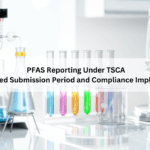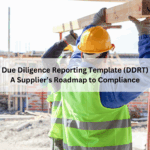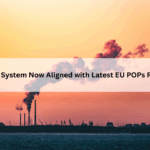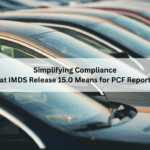PFAS, or per- and polyfluoroalkyl substances, are referred to as “forever chemicals,” and the European Union is working to eradicate them from everyday life. Known for their ability to withstand heat, oil, and water, these materials have found extensive application in everything from firefighting foam to cookware. However, because of their environmental durability and connections to health issues, they are a significant regulatory concern.
A global ban on all PFAS one of the most comprehensive chemical bans ever proposed—is at the center of the EU’s action. In 2023, Germany, the Netherlands, Denmark, Sweden, and Norway together submitted a restriction proposal under the EU’s REACH legislation. The European Chemicals Agency (ECHA) has been examining its socioeconomic and scientific ramifications ever since.
ECHA’s Socio-Economic Analysis Committee (SEAC) and Risk Assessment Committee (RAC) are still conducting assessments as of mid-2025. By the end of the year, their final conclusion is anticipated, which could lead to a restriction on more than 10,000 PFAS compounds across the continent.
What Would Be Covered by the Ban
The plan would limit PFAS production, use, and distribution within the European Union.
PFAS-containing goods include:
- Firefighting foams
- Non-stick cookware
- Textiles
- Cosmetics
- Food packaging
Even certain industrial applications might be phased out unless they are shown to be very necessary and have no other options. To encourage innovation and replacement, certain industries such as semiconductors, medical devices, and transportation may be granted temporary exemptions.
An Emphasis on Safety for Consumers
Environment Ministers of the EU pay particular attention to goods that are marketed to consumers. These are the first targets for restriction since safer alternatives are currently available. European authorities say that while addressing PFAS in ordinary products is a more immediate win, key technology usage will be handled gradually.
However, environmentalists caution that leaving out industrial PFAS waste and emissions could result in significant regulatory gaps.
TFA – An Unspoken Danger
Trifluoroacetic acid (TFA), a PFAS breakdown product that is now present in drinking water, rain, and even breast milk, is a crucial issue that is becoming more urgent. Under its chemicals laws, the EU is determining if TFA qualifies as a reproductive toxin. Stricter oversight and restrictions may shortly be implemented if approved.
Worldwide Momentum
The EU’s plan on PFAS aligns with mounting international pressure. The momentum toward global prohibitions was strengthened in May 2025, when long-chain PFAS also known as PFCAs were formally added to the Stockholm Convention’s global ban list. However, detractors claim that PFAS manufacturers are using forceful lobbying techniques to stall or erode legislation, emulating previous practices used by the fossil fuel and tobacco sectors.
What Comes Next?
- June 2025: PFAS limitation is still being assessed by an EU panel.
- July 2025: The European Commission will release an Action Plan for the Chemicals Industry.
- Early 2026: The EU will define the extent of the ban and provide recommendations on PFAS classification through the final REACH revision.
The EU’s decision to outlaw PFAS represents a significant change in the way chemicals are governed. The overall objective is clear: safeguard the environment and public health against persistent, dangerous compounds. Although there are still obstacles to overcome particularly for sectors that depend on PFAS the EU is establishing a global standard for chemical safety in the twenty-first century, with the help of scientists, non-governmental organizations, and individuals.





